It has taken me almost 8 years of research until I finally made a break in this case 3 days ago. I have focused mainly on authenticating the Walter Bosse hedgehog ashtrays, but I thought I should turn my attention to researching the origins of this forgery. It all started with someone mentioned that they thought the set of hedgehogs were made by famous Russian casting firm “Kaslinsky foundry” (spelled Каслинском / Каслинское / or Касли (Kasli) литейном заводе). I began digging into their history to see what I could find. Here’s a snippet from their Wikipedia page:
“Founded in 1747 in Kasli, Chelyabinsk region. They made high quality art casting out of cast iron with sand casting method. Kaslino workers used German castings brought by Grigory Zotov from Berlin as their first samples. The cast iron alloy, has lightness and delicacy. And at the same time, the casting objects have a feeling of steel hardness and durability. In 1934 a special shop for artistic and architectural casting (completely renovated, expanded and modernized at the end of the 1980s) was established, which was tasked with updating the themes of artistic products in order to reflect modernity.”
Sounds promising? After a bit of digging but I ended up finding that although the dates worked out and they did do artistic-casting, they really only worked in a very specific type of cast iron. I was actually able to find a Russian set that looks like it was made with the same Kasli-metal but it is quite crude. You can see that it is solid black and has a sandy cast iron texture with a lot less detail. There is also definitely no silver polishing like all the other Russian sets (this is not done with cast iron). See photo below (courtesy of Kaslinskoe-Litye.com).
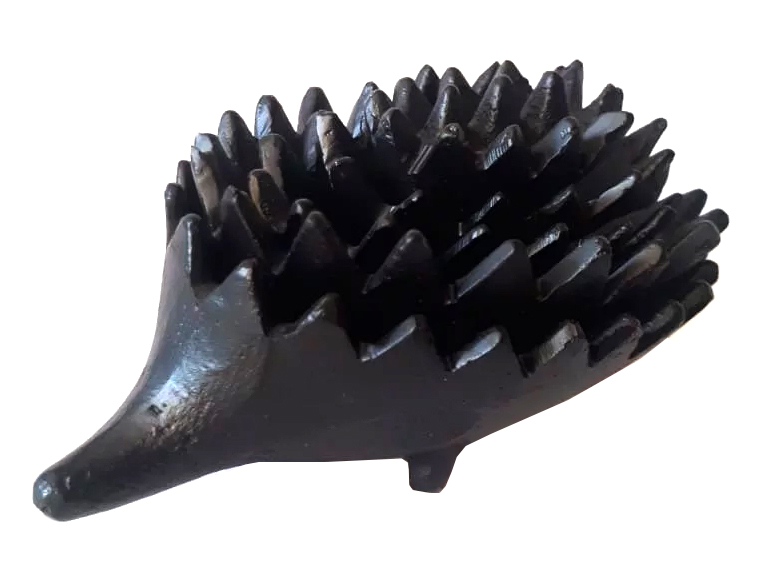
Considering the fantastic detail Kaslinsky they were getting out of their art casting I kind of still doubt this one was even manufactured by them (but cast iron is notoriously difficult to work with). Also, as a fine art casting foundry they were not set up to pump out thousands of these sets that now flood the market (and did back then as well). There was also no record of them using anything similar to the logo on the bottom of all the hedgehogs. It felt like a bit of a dead end.
So I decided to turn my attention to deciphering the Russian logo instead. I found a few other people mention that the logo reads МПЗ (which means MPZ), but I made a break in the case after my type designer partner suggested that there might be an implied “1” in front of the МПЗ. That brought us to 1МПЗ, or the 1st Moscow Instrument Making Plant, which has been around as far back at 1914 manufacturing parts for the aircraft industry and located in the Dorogomilovo district. It was initially called in 1917 Aviapribor (Авиаприбор), in 1935 it was named after Sergo Ordzhonikidze (Серго Орджоникидзе), in 1942 it becomes 1МПЗ (1MPZ), and in 1981 after Vasily Alexandrovich Kazakov (Василия Александровича Казакова). Their website can be found at https://www.1mpz.ru/ and a translation with google at https://translate.google.com/translate?sl=ru&tl=en&u=https://www.1mpz.ru/. The history/about page on the website states:
“By 1940, the plant was the main enterprise for the production of aviation instruments, producing 80-100% of aviation devices in Russia. The plant glorified its name not only by rapid development and implementation of the most complex aviation control systems, but also by the production of consumer goods in 1945. Beds with a metal mesh, pharmaceutical scales, children’s toys, vacuum cleaners, high strength magnets, etc. were produced. In 1963, a specialized workshop for consumer goods was created from scattered areas. In the late 80s it grew into an Industrial Complex for the production of consumer goods for radio, household and souvenir products. Consumer goods produced by our plant were exported to Czechoslovakia, Hungary, Syria, Germany, France and other countries. In 1988, in order to improve quality of manufactured products and increase the volume of production of civilian products and profit, a specialized design bureau was created at the plant, engaged in the development and introduction of serial production of products for export all over the world, with high serialability as the main focus.”
Now that’s getting a lot closer! All the boxes the the Russian hedgehogs come in say “пепельница ёж сувенир” or “Souvenir Hedgehog Ashtrays” and the website mentions a history of specifically manufacturing souvenirs. Also Bosse mentioned in an essay he wrote that the Russian hedgehogs had to be manufactured in large quantities to make them profitable:
“The hedgehogs made in Russia seem to run in particularly large batches, because zinc injection molding requires expensive molds that are only really worthwhile for very large productions.”
So I guess these are now made out of zinc! I then turned my attention to finding as many boxes as I could to see if there was any detail I could decipher. Here are all the boxes and the logos on the bottoms of the hedgehogs:


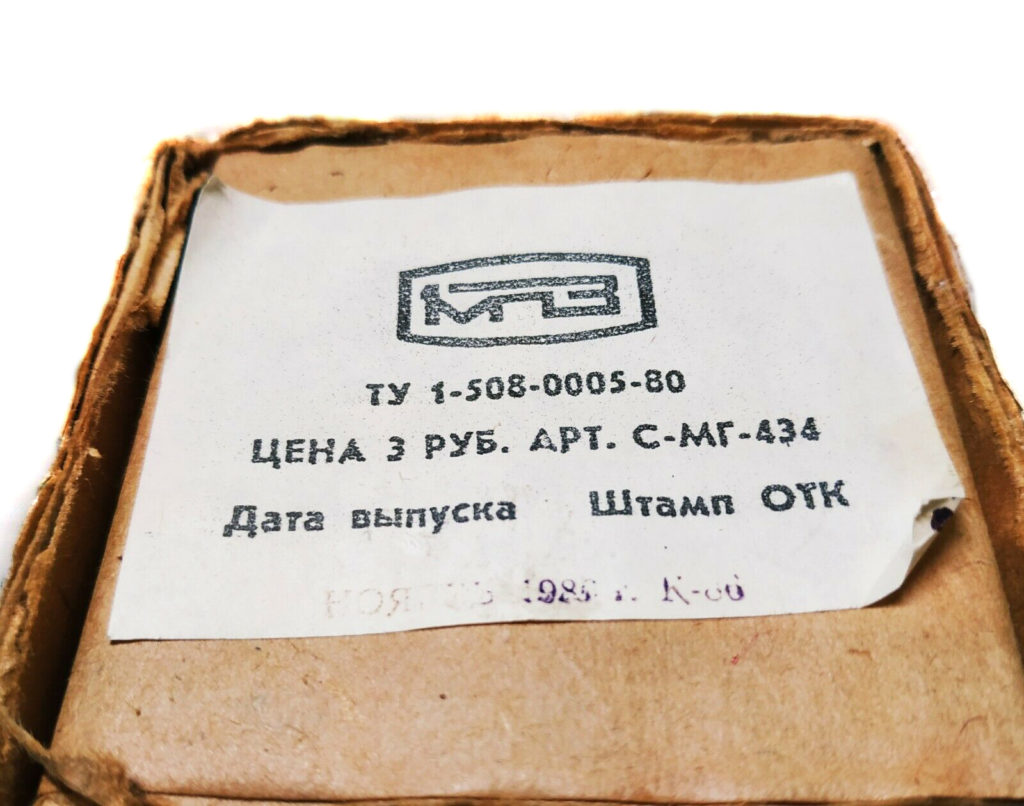



The boxes all had similar specific manufacturing data on the sides and one set even had a manufacturing date. Two of the boxes even had old price stickers from the retail stores they were sold in. One sticker reads: “Beriozka” (Берёзка, “little birch tree” ) and the other “Березка”. Beriozka is a state run retail store that sold luxury items in exchange for foreign currency. Opened 1969, closed 1990s. Networks of Beriozka stores were called “birches”. Both had a cost of 1.80 (1 Ruble and 80 Kopecks). Here is what the boxes read:
ту 1-508-0005-80 / ту 1-508-0005-77 TU1-508-0005-80 / TU1-508-0005-77
Цена з PУБ. Aрт. c-мг-434 Price Per Rubles Article S-MG-434
Дата выпуска OTK штамп Date of Issue Quality control department Stamp
Нояжь 1985 K-86 November 1985 K-86
So now all I had to do was find this logo in use on some of the other products manufactured by 1МПЗ (1MPZ). Luckily, that’s exactly what I was able to find! Items include a zinc souvenir medal from the war of 1812, a magnetic cabinet latch (magnets manufacturing was mentioned on their site), an enamel medal from the 1980 Russian Olympic Games, a metal lighter, and a zinc souvenir bottle stopper from the war of 1812. Here’s a collection of the images below:
Please Note: It takes a great deal of time, effort, and money to maintain the museum collection, host this website, create informative posts, and respond to authentication and identification requests. Thank Alyssa for her expertise and authentication assistance here—tips are greatly appreciated!
Buy a Coffee for Alyssa!So all these items seem to use the same logo. The bottle stopper and the medal both use the same type of zinc metal that the hedgehog ashtrays use (blackened with silver polishing). If and if you look at 2 packages that have information on the backs, they all use the same kind of model numbering system and are from the 1980s. For example, the Olympic medal reads:
Сувенир – вымпел Souvenir – pennant
ОЛИМПИАДА 1980 OLYMPIAD 1980
АРТ. С-МГ-34Д-78 Article S-MG-34D-78
ЦЕНА 1 ру6. 90 коп. PRICE 1 ruble 90 kopecks
Клеймо ОТК OTK Stamp (Quality Control Department)
Дата вылука Manufacture date
январь 1980 K-80 January 1980 K-80
This is the exact same format used on the stickers on the sides of the hedgehogs. The last clue in the case came at the end of the packaging for the 1812 souvenir pennant. The bottom of the package has the 1МПЗ (1MPZ) logo as well as reading “Первый московский приборостроительный 3-д / 121170, Москва, Г-170” or “The First Moscow Instrument-Making 3-d / 121170, Moscow, G-170″ which is located within the Dorogomilovo district where 1МПЗ (1MPZ) still stands today.
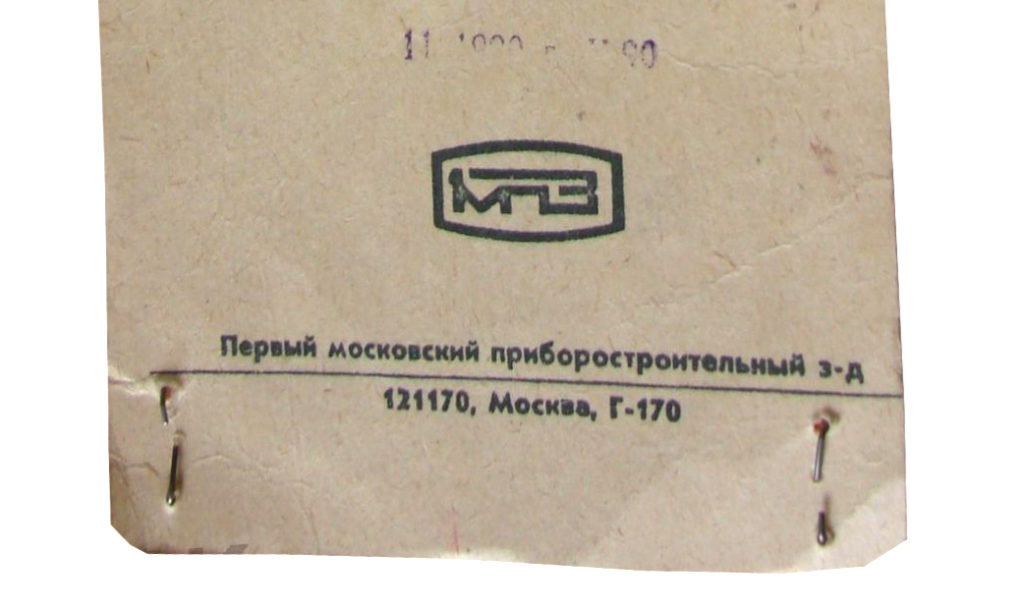
Last but not least, I want to turn my attention to the winged sets previously attributed to Aeroflot. I have not seen them using the 1МПЗ (1MPZ) branding anywhere but they are definitely made by the same manufacturer. Below are two models with the winged logos: one earlier (from the 70s) and one later (from the 80s). The earlier one is bare light silver metal and the later one has dark applied patina and polishing. Other than that they look exactly the same and are made with the same metal and same casting techniques at the 1МПЗ (1MPZ). 
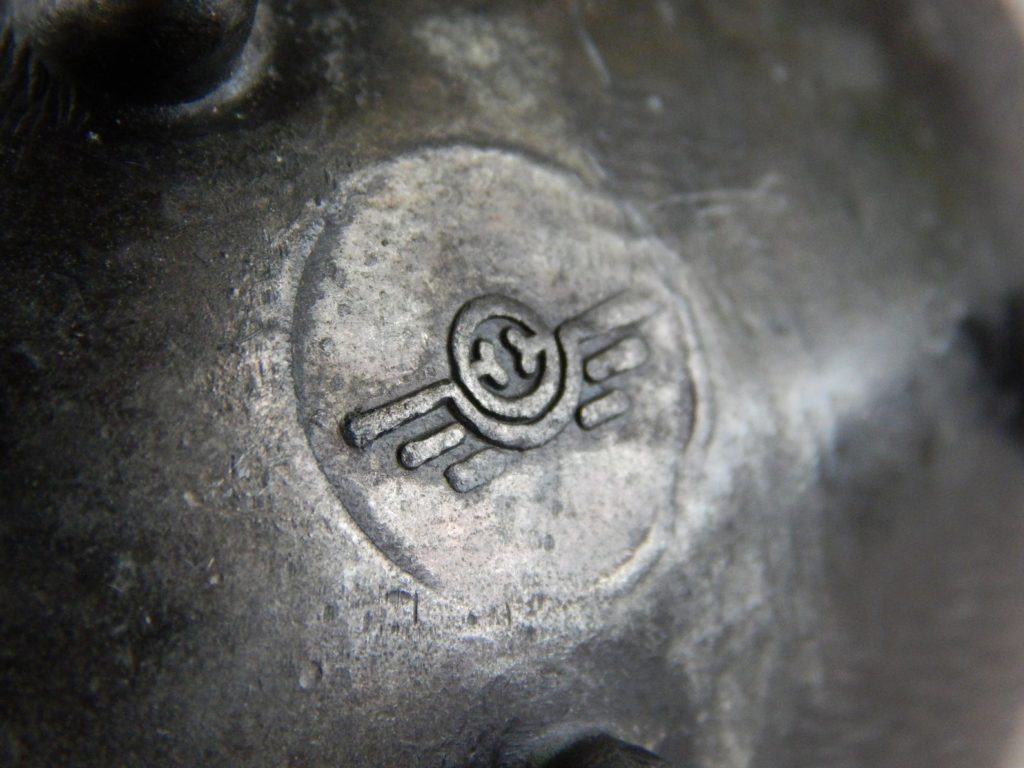

So now let’s turn our attention to the winged logo and the possible Aeroflot attribution. The fact that 1МПЗ (1MPZ) was making aviation equipment for Aeroflot probably led to the attribution of this being an “Aeroflot” branded set. While it is possible that these hedgehogs were purchased and sold by Aeroflot when the plant expanded to making housewares and souvenirs, I don’t think they are Aeroflot branded. Here is a photo of the winged logo and a photo of all the Aeroflot logos ever used by the airline for comparison:
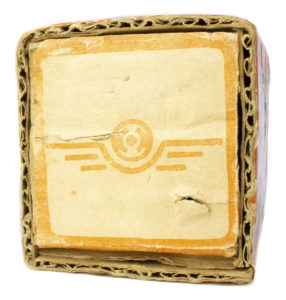

Upon closer examination of the two logos side by side shows significant differences between the two. The winged hedgehog logo only ever has two wings with 3 feathers surrounding a central design of interconnected circles with a dot in the center. The Aeroflot logo always involves a hammer and sickle in the center with two wings on either side. The wings always have 4 or more feathers with the two handles of the hammer and sickle extending below the circle.
 Although it could be argued that the winged logo was a simplified Aeroflot design for use at a small size, we know the casting from the hedgehogs could capture detail well. Also, the Aeroflot logo was used in small applications, as seen on this small souvenir enamel pin. So with all that, I believe the winged logo is actually the earlier logo of “Авиаприбор” or “Aviapribor” before the name was changed to 1МПЗ (1MPZ) in the 1980s. There is no record of the “Aviapribor” logo, but similar logos show up on aviation equipment from the period (2 wings around a central design).
Although it could be argued that the winged logo was a simplified Aeroflot design for use at a small size, we know the casting from the hedgehogs could capture detail well. Also, the Aeroflot logo was used in small applications, as seen on this small souvenir enamel pin. So with all that, I believe the winged logo is actually the earlier logo of “Авиаприбор” or “Aviapribor” before the name was changed to 1МПЗ (1MPZ) in the 1980s. There is no record of the “Aviapribor” logo, but similar logos show up on aviation equipment from the period (2 wings around a central design).
Now on to the box. The only box I have ever seen in existence that is associated with winged set is this orange and blue box with an illustration of a hedgehog on the front and reads “Hedgehog Ashtray” and “Souvenir” in a logo up in the right-hand corner. Here are photos:
If you look closely at the side of this box, it also seems to have some dating info on the side as well. This reads:
АРТИКУЛ С-1 ARTICLE C-1
ЦЕНА 3 руб. PRICE 3 Rubles
ту 1-508-0005-77 tu 1-508-0005-77
Дата выпука И – 78 Date of issue June/July – 78
Штамп ОТК OTK Stamp (Quality Control Department)
ТИЗ. зак № 10751-15000 TIZ. order № 10751-15000
This is the exact same numbering system used by 1МПЗ in the above hedgehog boxes and other product packaging so I believe it is made by the same company. The date of this set is earlier, made around June/July of 1978. Interestingly this set originally cost more money, 3 Rubles, even though it was manufactured earlier. It is possible that the increased price because they were made for Aeroflot as souvenirs for tourists, thus they could charge a higher markup. The other sets were sold domestically in stores to locals. It’s also possible that the expansion of the plant’s capabilities allowed for them to manufacture these even cheaper after the 80s.
Final conclusions (TLDR): The fake Russian hedgehog ashtrays are made by 1МПЗ (1MPZ), or the “1st Moscow Instrument Making Plant” and NOT by Walter Bossse. They are made of zinc with injection molding, which required large scale manufacturing. One set was made in November of 1985. The original price in the 1980s was 1 Ruble and 80 Kopecks and were sold at networks of Beriozka stores. The Aeroflot set was made by the same manufacturer and the original box has an earlier date of June/July 1978. It cost 3 Rubles.









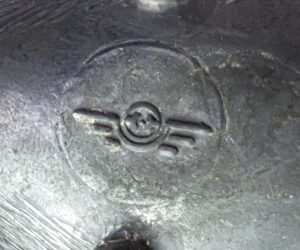
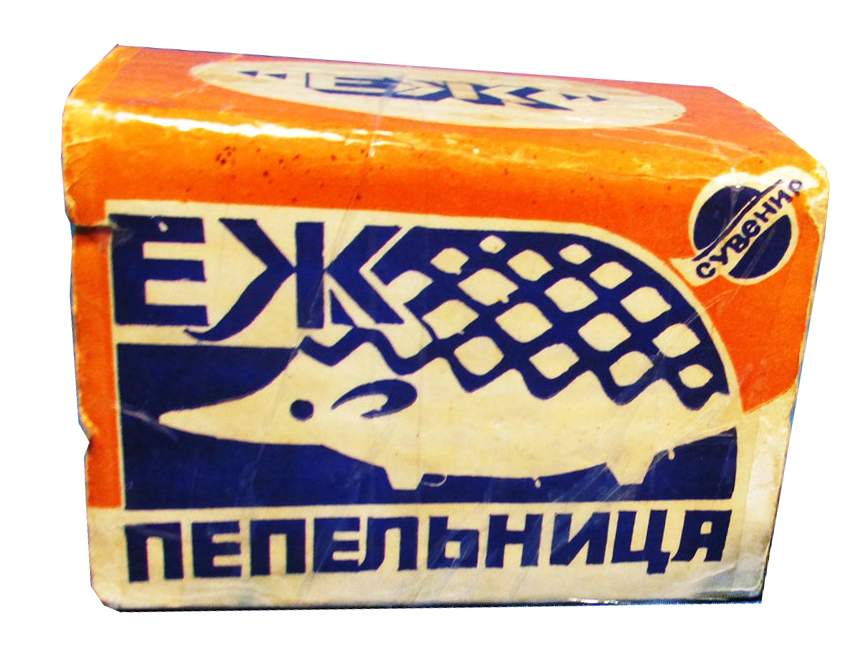

Thanks for this information. I bought a set of these russian hedgehogs in a charity shop for a few pounds. I didn’t know any thing about them but thought they were lovely. What a shame the original artist didn’t get his dues. I’m glad I know more about them now. I like them even more.